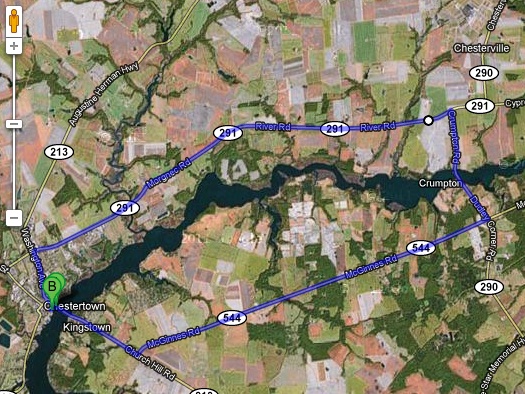Finding itself on the ground, the bird surveyed the world from an unfamiliar vantage point. Behind it was a vast cornfield. In front was a road.
 The brown and white speckled bird was about 2 ½ feet long and could easily be mistaken for an osprey or a hawk, but a closer inspection of its beak, eyes, and head shape revealed it to be our national icon, the American Bald Eagle. The distinctive white head and tail take about five years to develop which meant that this bird was still a sexually immature juvenile.
The brown and white speckled bird was about 2 ½ feet long and could easily be mistaken for an osprey or a hawk, but a closer inspection of its beak, eyes, and head shape revealed it to be our national icon, the American Bald Eagle. The distinctive white head and tail take about five years to develop which meant that this bird was still a sexually immature juvenile.
With eyes that are four times more powerful than those on a human with 20/20 vision, the eagle spotted a woman and two dogs walking down the road towards it. Unable to fly, the bird hunched down, almost willing itself to fade into the tall grasses.
The woman, my wife Gretchen, spotted the bird before the dogs did and led them away before they had any notion of trying to make its acquaintance. Judging from the eagle’s razor sharp claws, I don’t think such a meeting would’ve ended well.
When Gretchen returned on her own to see if the eagle was okay, it began to hop away from her. Something was surely wrong with the bird.
She contacted, Bennett Price, a friend who works at the Kent County Humane Society. While, the Humane Society doesn’t deal with wildlife, Bennett was about to take his lunch break and was happy to help out.
Tristate Bird Rescue and Research (www.tristatebird.org) is a non-profit in Newark, DE that works to rehabilitate and release wild birds. They informed Gretchen that severe budget cuts meant that they couldn’t afford to make the hour-long drive to our house, but if we could get the bird to them they would care for it. They advised us on how to safely “catch” it: cover the bird in a blanket or towel and try to avoid the talons and beak while placing it into a cardboard box.
Luckily, Bennett was better equipped than the average homeowner. After a bit of trial and error, which included following the bird after it retreated into the cornfield, he was able to catch the eagle in a net designed for stray dogs and placed it into a large crate used for animal transport.
We were grateful for the crate. Occasionally the eagle got agitated and hopped around with enough force to easily overturn a cardboard box.
Gretchen drove the eagle to Newark. The car ride was almost certainly another new experience for the bird. When her speed was constant and the car was going straight, the bird remained fairly calm, but any time she had to use the brakes or make a turn, the shift in momentum caused it to flap around in nervous agitation.

When she arrived at Tristate, the grateful employees admitted the eagle into the Wild Bird Clinic. She filled out some paperwork detailing where and how the bird was found.
A few minutes later they returned the now-empty pet carrier. She asked if she could see the eagle one last time and maybe take some pictures of it now that it was no longer in the crate.
Unfortunately, the staff explained that they couldn’t allow the general public into the back rooms of the clinic. They will send us a postcard at some point updating us on the bird’s progress.
With mature adult birds, they make every effort to return it to its original habitat. Since the bird we found was still immature, it will be released in the Newark area where it will assimilate with the other eagles living there.
We won’t see “our” eagle again. But the memory remains. Even in the crate, the large raptor was intimidating. Every time it jostled the cage we were reminded of how much power was contained inside.
As it looked out at us from behind the wire, I can’t help but wonder what it thought. Did it know we were trying to help?
Its eyes remained sharp, focused, and wild. Although, for the most part the eagle appeared calm and patient. Perhaps it was biding its time for that moment when it could, with a powerful thrust of its wings, render us insignificant specs.







